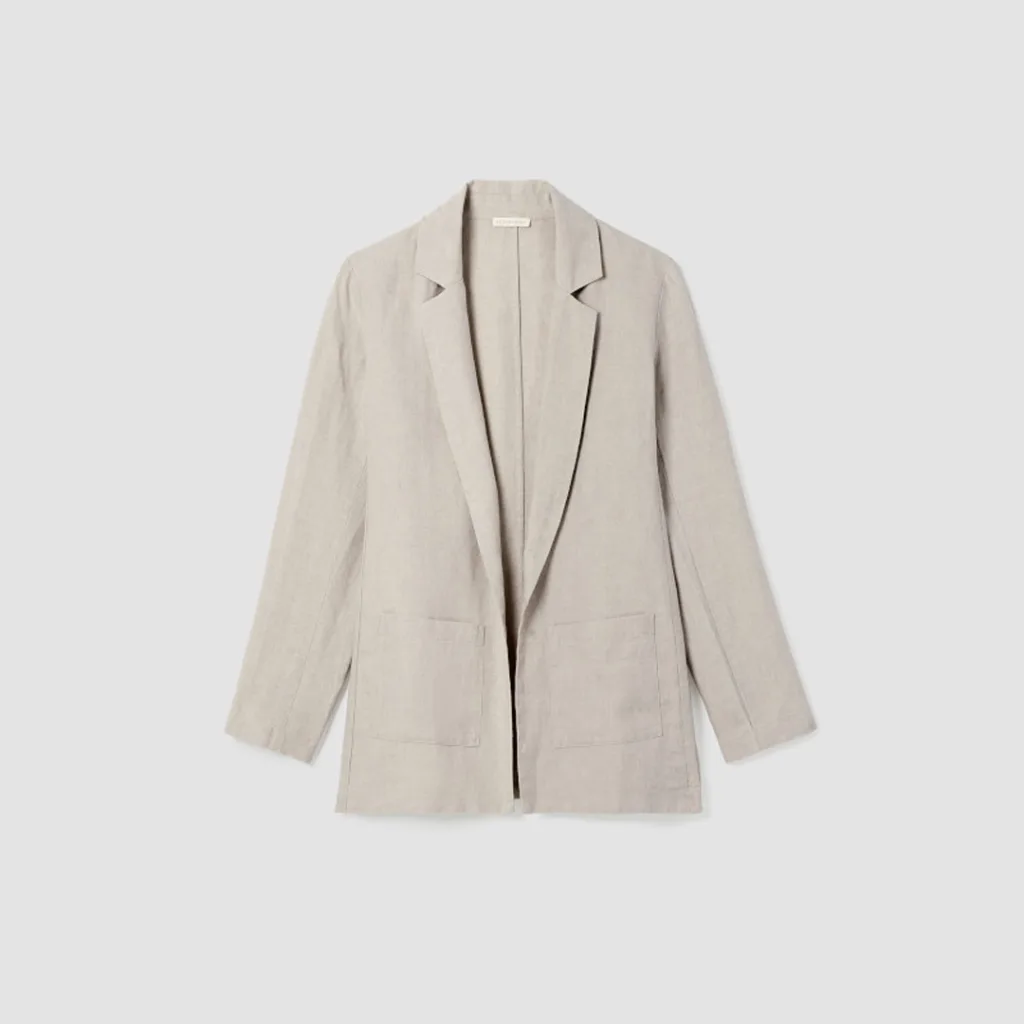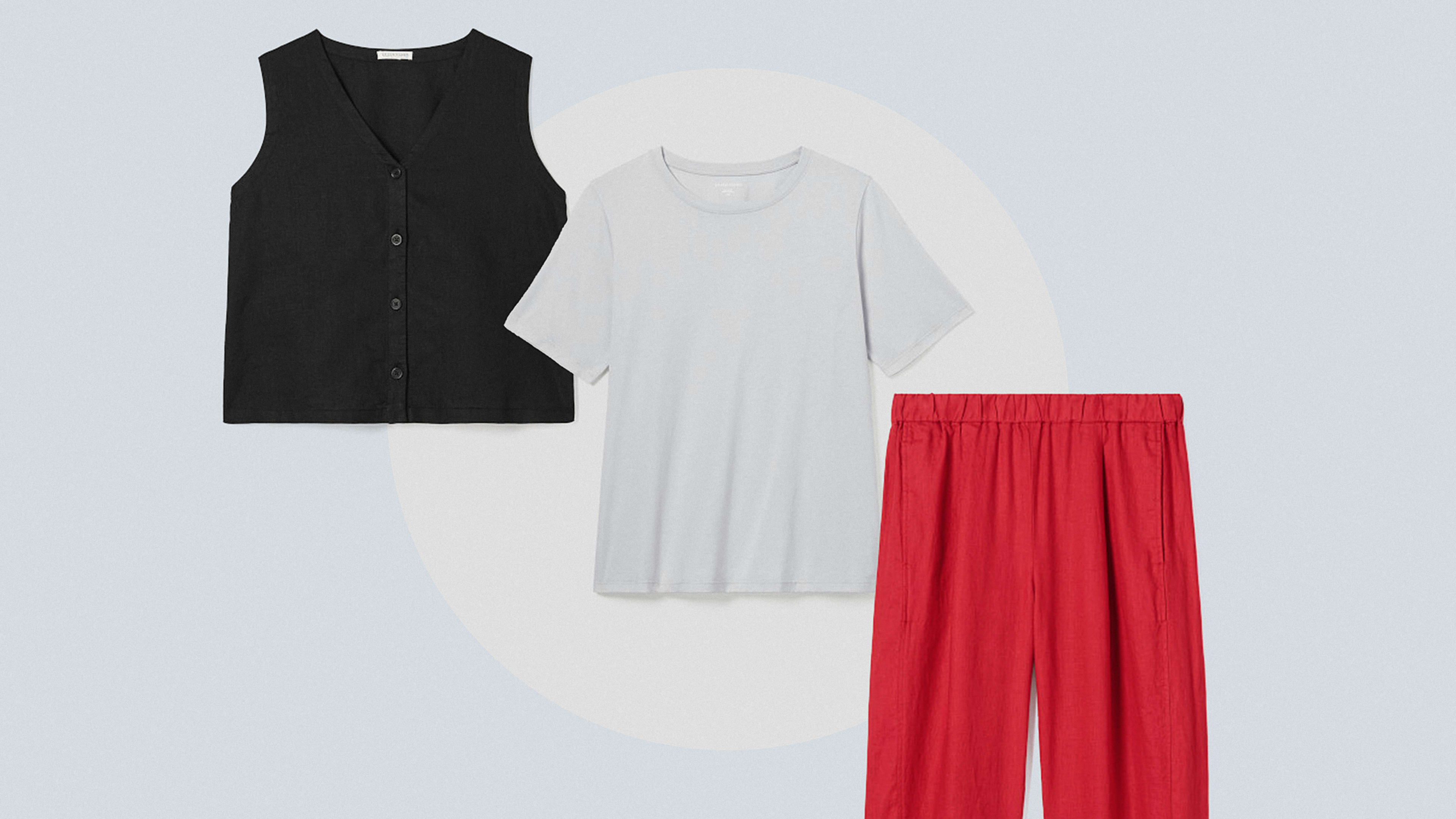The average American woman has hundreds of clothes in her closet, even though she only wears a small fraction of them. And every day, brands try to get us to buy even more products by advertising the latest trends. Wide-leg jeans are in. Cowboy Core is hot. Metallics are in vogue.
This cycle of overconsumption is destroying our planet. It’s accelerating climate change, filling our oceans and landfills with harmful microplastics, and using up precious natural resources. And ultra fast fashion brands like Shein are only accelerating the pace of production.
Eileen Fisher has had enough. For the past 40 years, the designer and founder of the eponymous label has been focused on creating simple, minimalist garments. Her goal has always been to encourage customers to own fewer pieces that they wear on repeat. As the environmental crisis has gotten worse, her approach to design is now more relevant than ever.
The company is now on a mission to educate the public about the art of paring down their wardrobes. It has just launched three tools designed to help people buy a few carefully selected garments that can be mixed and matched for many looks. The notion of asking customers to buy less is radical when most fashion brands are focused on growing at all cost. But ultimately, Fisher has calculated that it is possible to run a successful business while discouraging overconsumption.

The 12 Essential Shapes
When Eileen Fisher started her company in 1984, she sold only four garments: A tank top, a pair of loose-fitting trousers, a long-sleeved shirt, and a vest. She designed each piece strategically to create different looks that worked in different contexts. As the company has grown, Fisher and her design team have created many more silhouettes and styles. But she’s eager to come back to the idea of a few key silhouettes.
Starting this April, the brand will highlight 12 garments every season that are the most basic and versatile, and can be combined to create endless outfits. “The 12 Shapes,” to use the brand’s terminology, will be prominently displayed on the website, along with ideas for how to style them. “Our intention is to identify the simplest, most versatile and relevant pieces this season,” says Fisher, in a statement about how she picked the 12. “The ones we believe our customers will wear for years to come.”
For the summer, the brand has picked linen trousers, tank tops, button-down shirts, linen blazers, and cardigans, among other pieces. And models on the website show the ways you can combine them to create formal and informal looks. On a warm day recently, I tried on a pair of black slim-fit trousers along with a black organic linen jersey tank top. It’s a simple, sophisticated look that is appropriate for brunch or school pickup. But with a sheer silk, knee-length jacket, I instantly elevated the look, making it perfect for work or a nice dinner.
“The goal isn’t to get the customer to buy all of these pieces,” says Blair Silverman, VP of e-commerce, who helped design the website that features the 12 shapes. “Most of them are so basic, you probably already have a version of it in your closet. But the website is designed to illustrate how you can put them together in new ways, or buy a single piece that will transform what you already have into an outfit that looks completely different.” The brand will update the website to feature 12 new pieces every season.

Live Models
Eileen Fisher has just launched a new digital experience called The Closet designed to bring these 12 pieces to life. Developed with Paris-based virtual try-on company Veesual, the tool features eight models with different body types that you can dress up, allowing you to see how each garment looks on your particular body type or how you could mix and match items.
For instance, if you already have a wide-leg pant and black long-sleeved shirt, you can see how these pieces would pair with an oversize linen blazer. “It allows you to play around with proportions,” says Silverman. “We were trying to create a kind of modern day paper doll that customers can have fun with.”
The technology plays into the brand’s focus on helping customers do more with fewer garments. But it also has other environmental benefits, such as reducing returns, since customers can get a more accurate sense of how the garments will look on them. “We’re a size-inclusive company, and this can help customers predict how something will fit them,” she says.

Seasonal Planner
The brand has also launched a new tool that allows people to see what clothes will be released over the next three months. This goes beyond the essential 12 pieces and includes the many other garments. The goal is to help customers to better plan ahead as they shop, rather than making impulse decisions.
On the surface, this seasonal planner seems simple. But it goes against the dominant trend in the fashion industry. Fast fashion brands tend to drop new garments on their website regularly. Shein, for instance, launches upwards of 6,000 new styles every day. This keeps customers coming back to see what’s fresh. They might also buy new pieces, not realizing there’s something they might like even better coming in a few weeks.
Eileen Fisher is offering unprecedented transparency into what they’re going to release months in advance. Silverman says the goal is to help customers think more intentionally about their wardrobe, and consider their options. For instance, if you need a new T-shirt, you can see all the new colors coming out throughout the season. You might wait a month to get it in pink. Or if you’re in the market, you might prefer a silhouette that comes out later in the summer.
Actively trying to reduce consumption seems like a recipe for business failure. But when I spoke with Eileen Fisher’s CEO, Lisa Williams, last fall, she disagreed. The brand has always been focused on minimalism, and yet the company is profitable. This is largely because the brand has an army of loyal customers who love the durable, well-designed clothes and come back year after year.
Silverman believes these new tools will reinforce the brand’s values and deepen this loyalty. But she also hopes that it attracts new generations of consumers. “We’re trying to win over younger customers,” she says. “We know these customers care about the environment and these tools are aligned with their values.”
Recognize your brand’s excellence by applying to this year’s Brands That Matter Awards before the final deadline, June 7.
Sign up for Brands That Matter notifications here.
